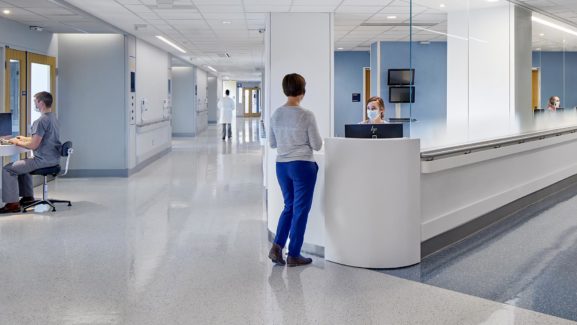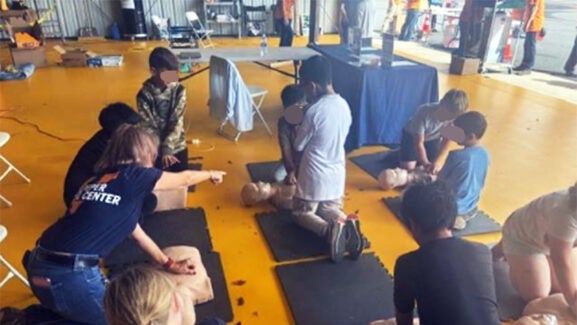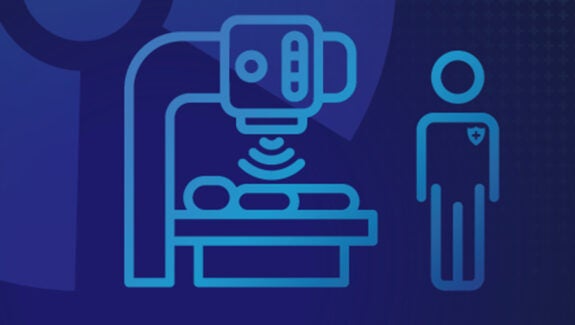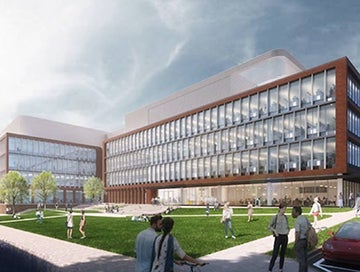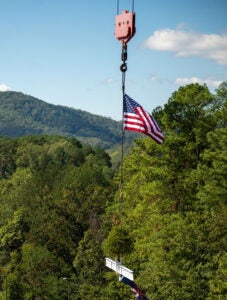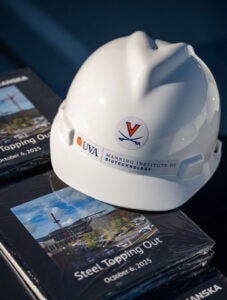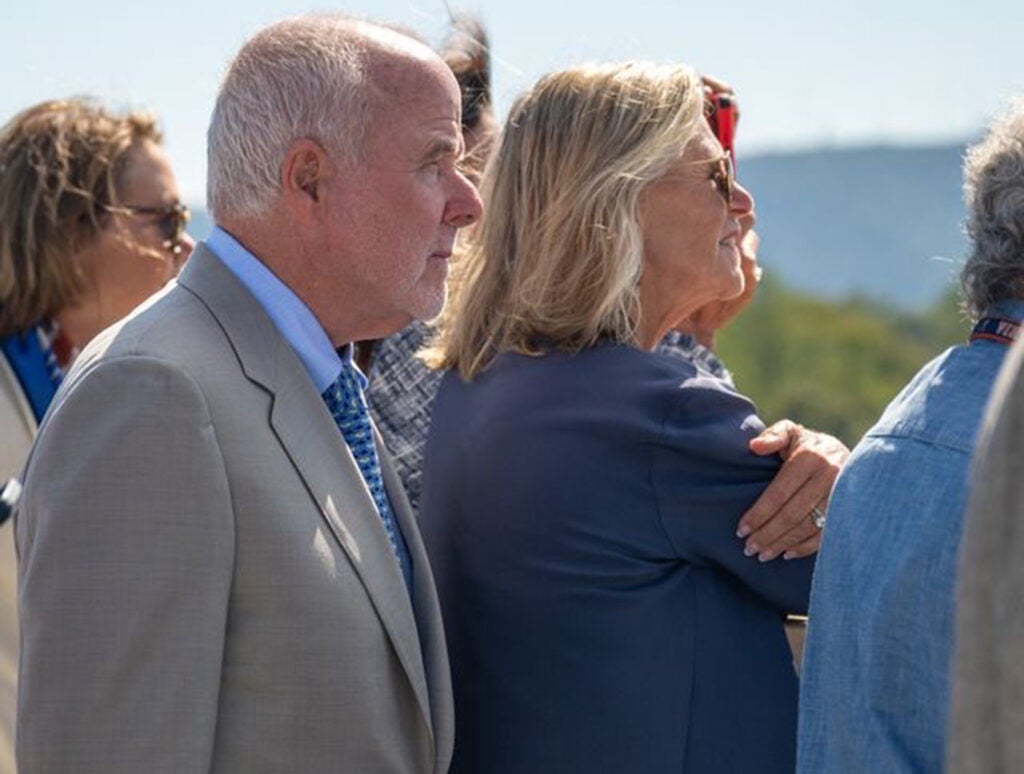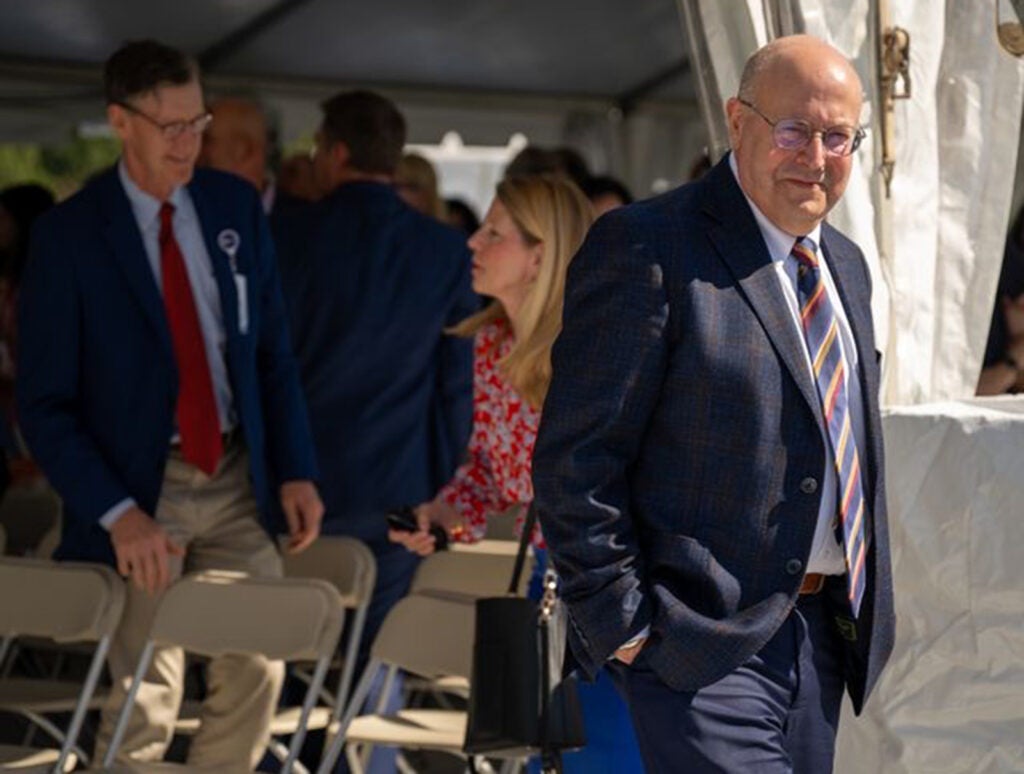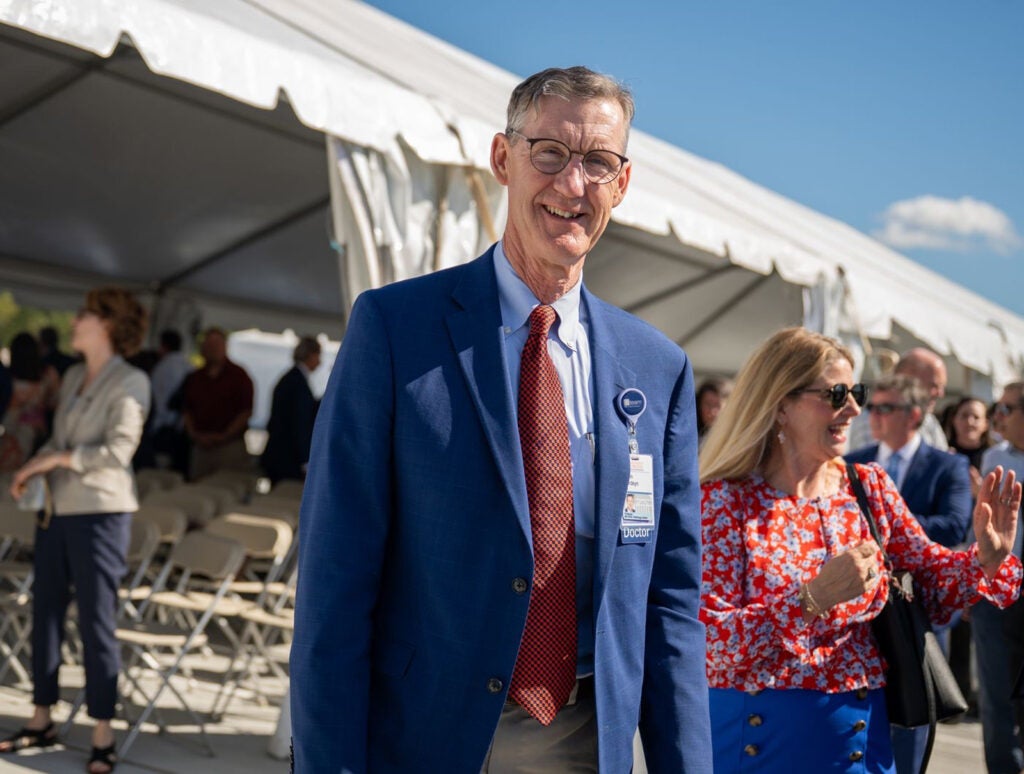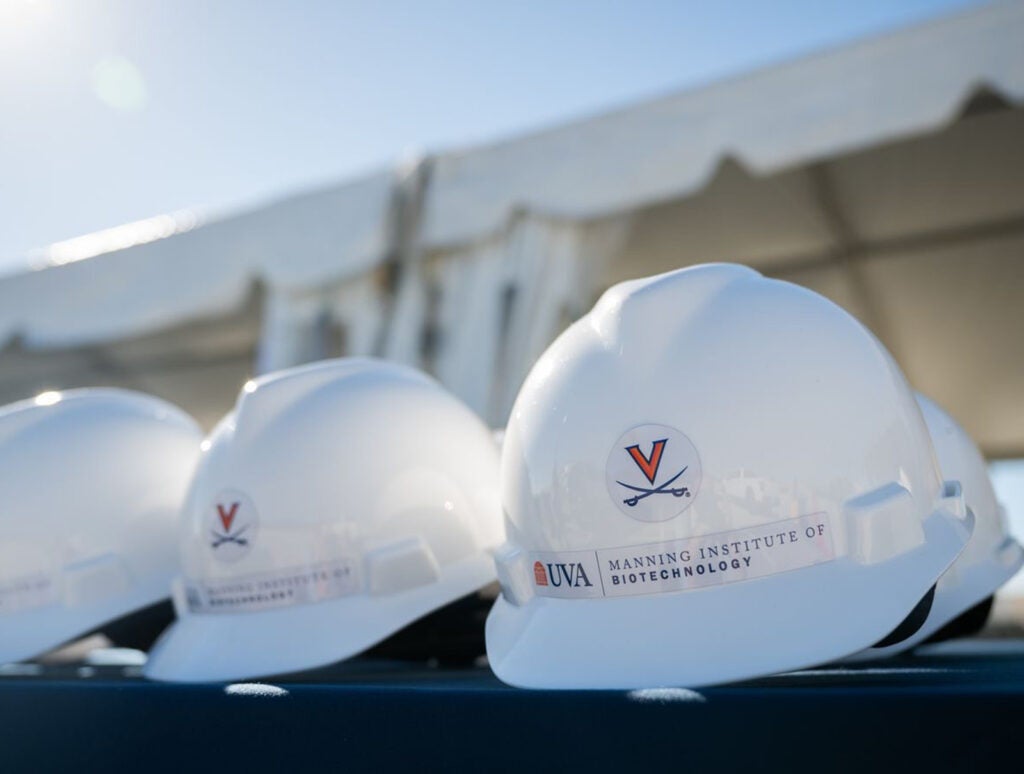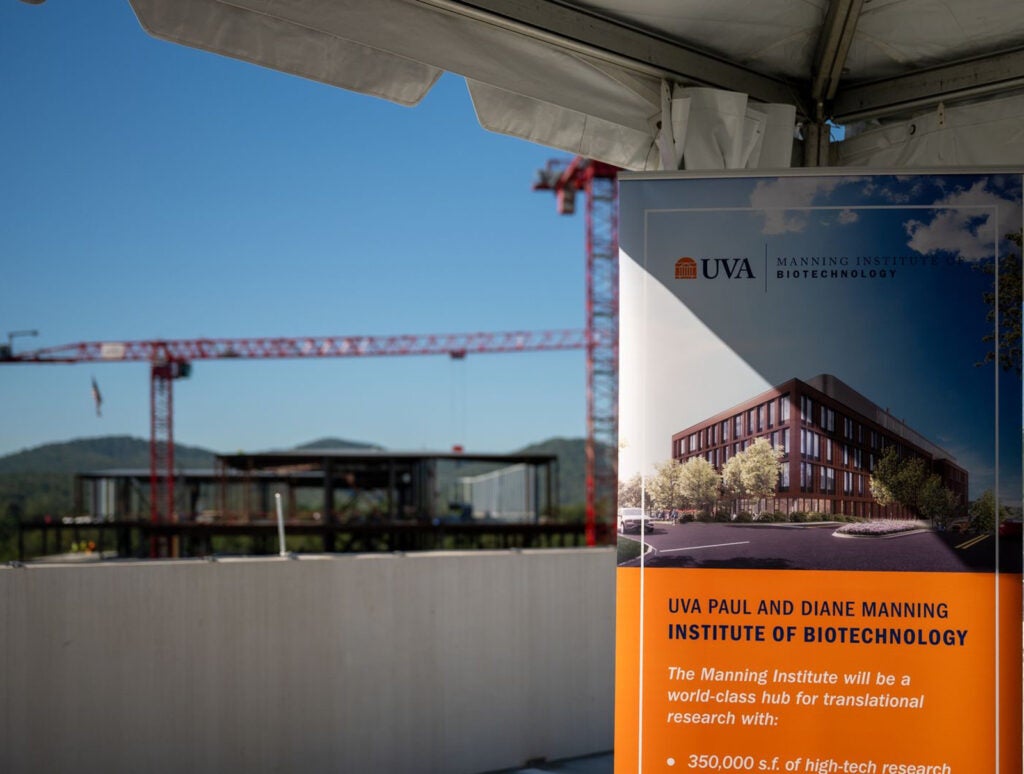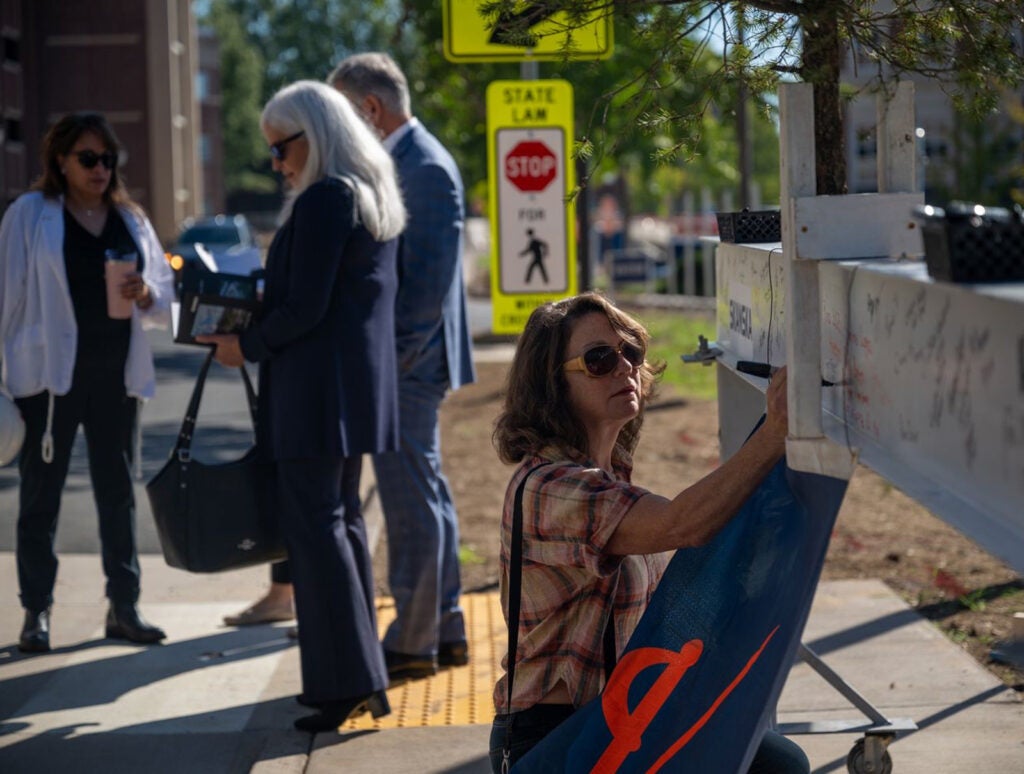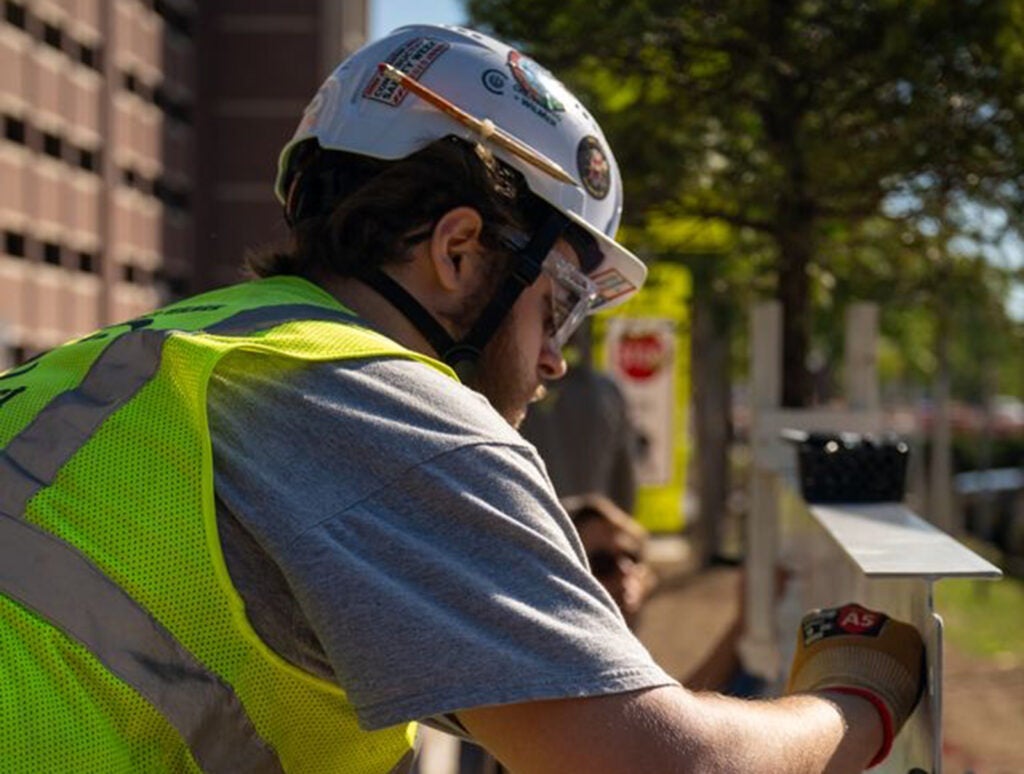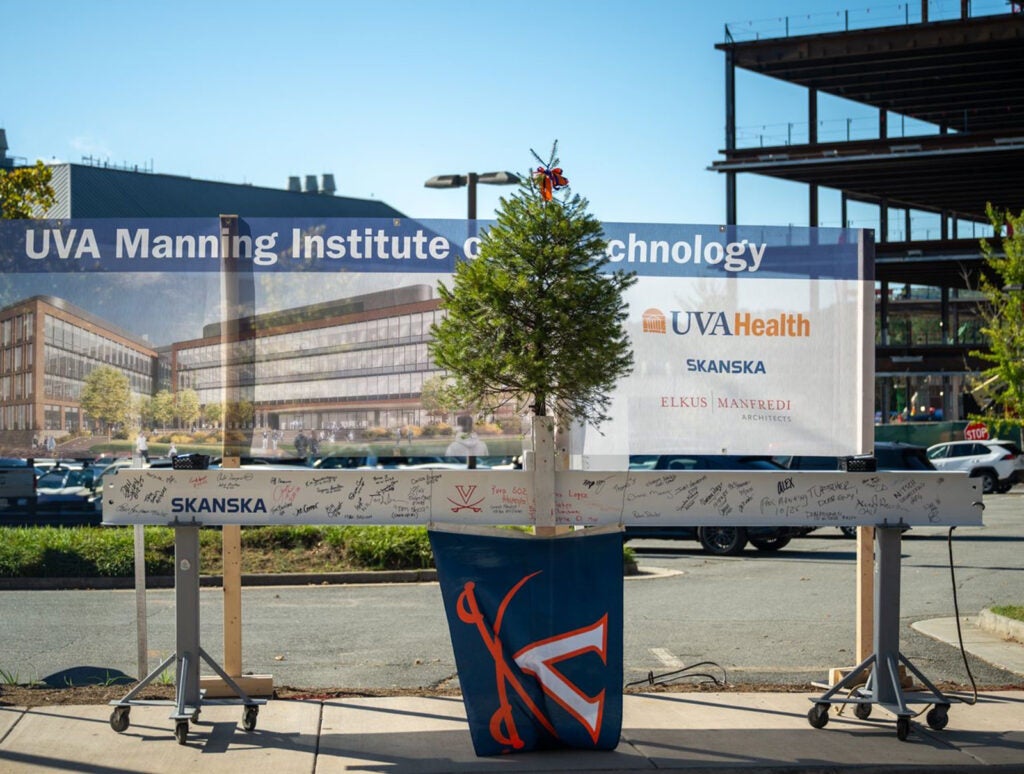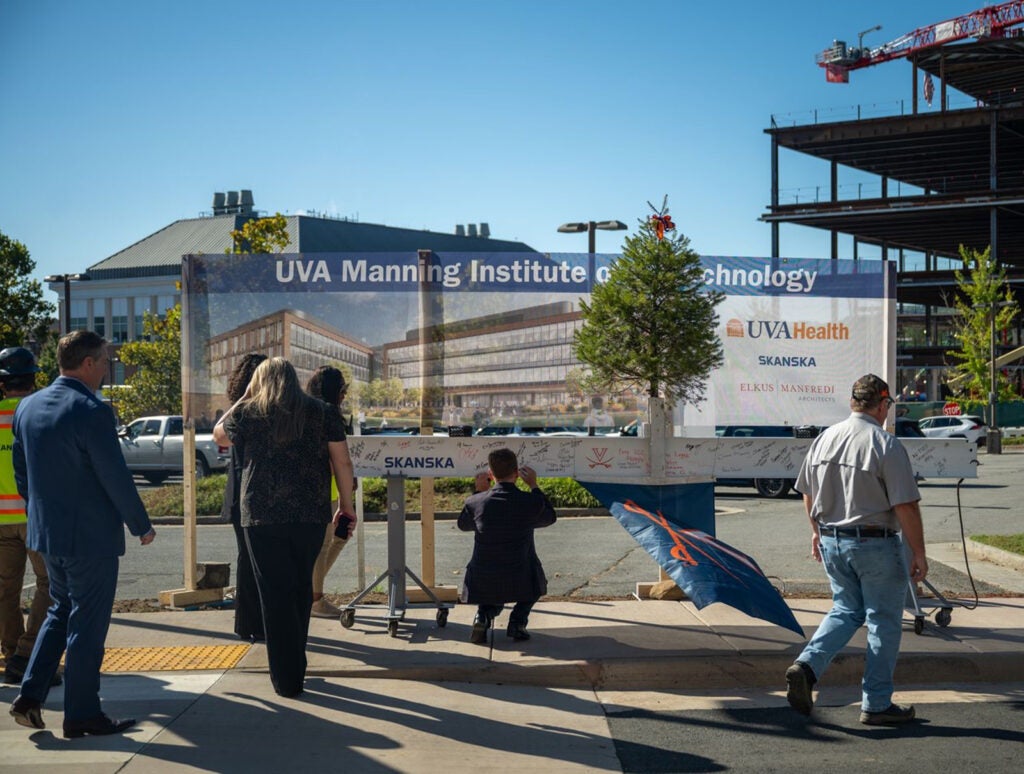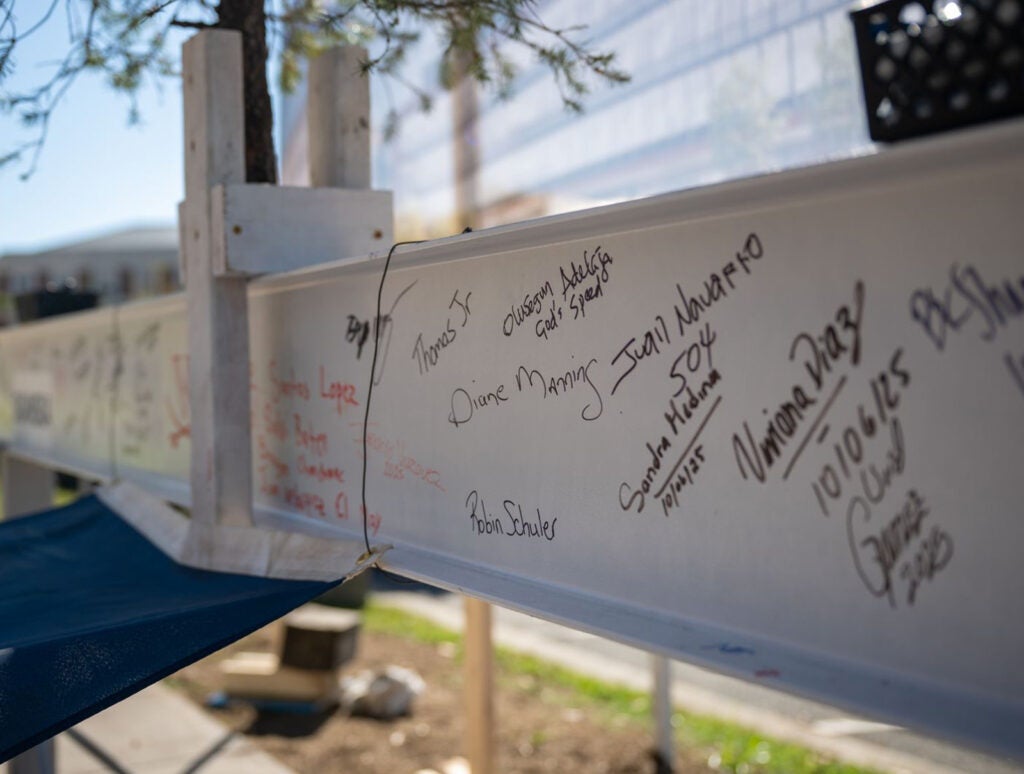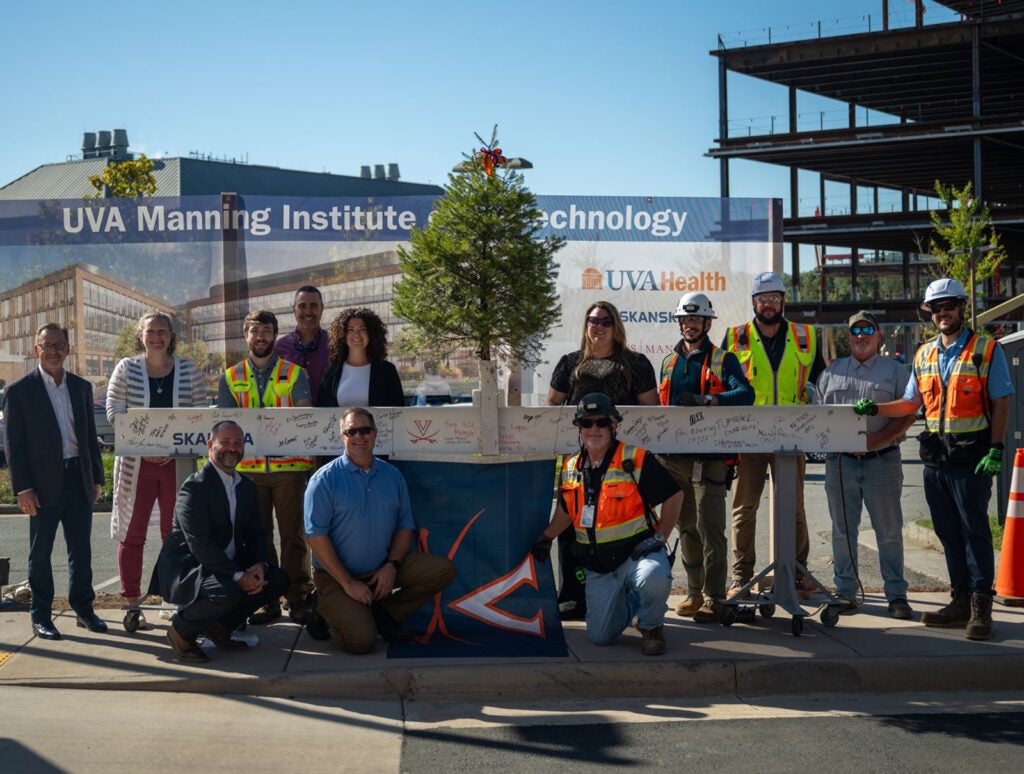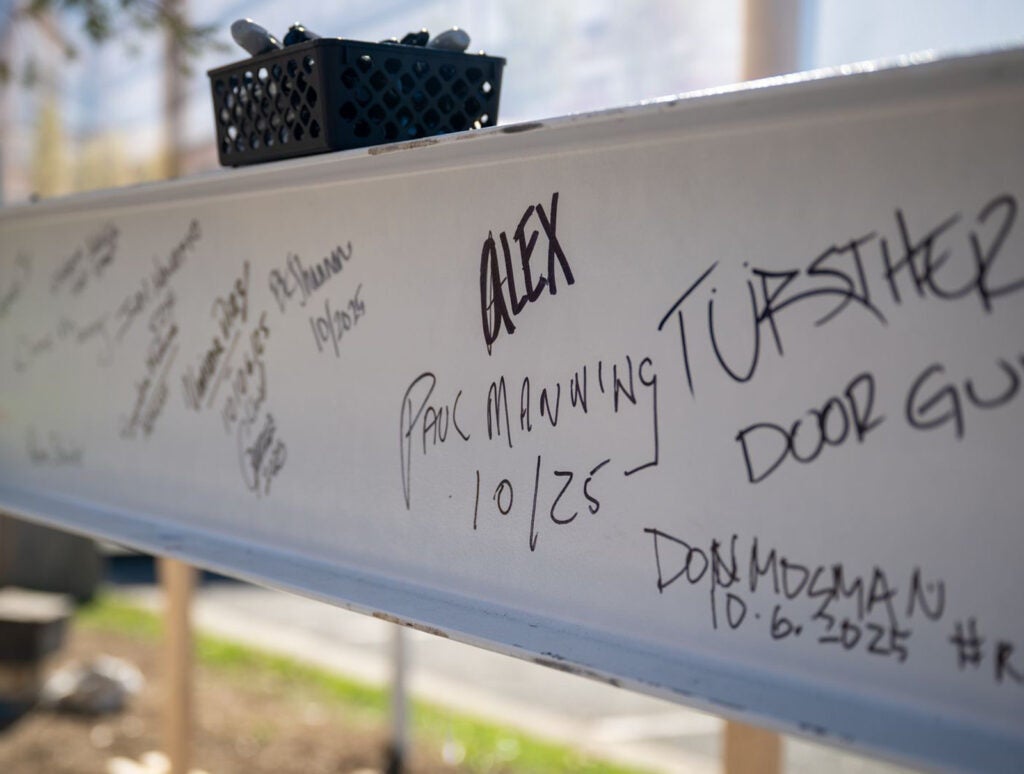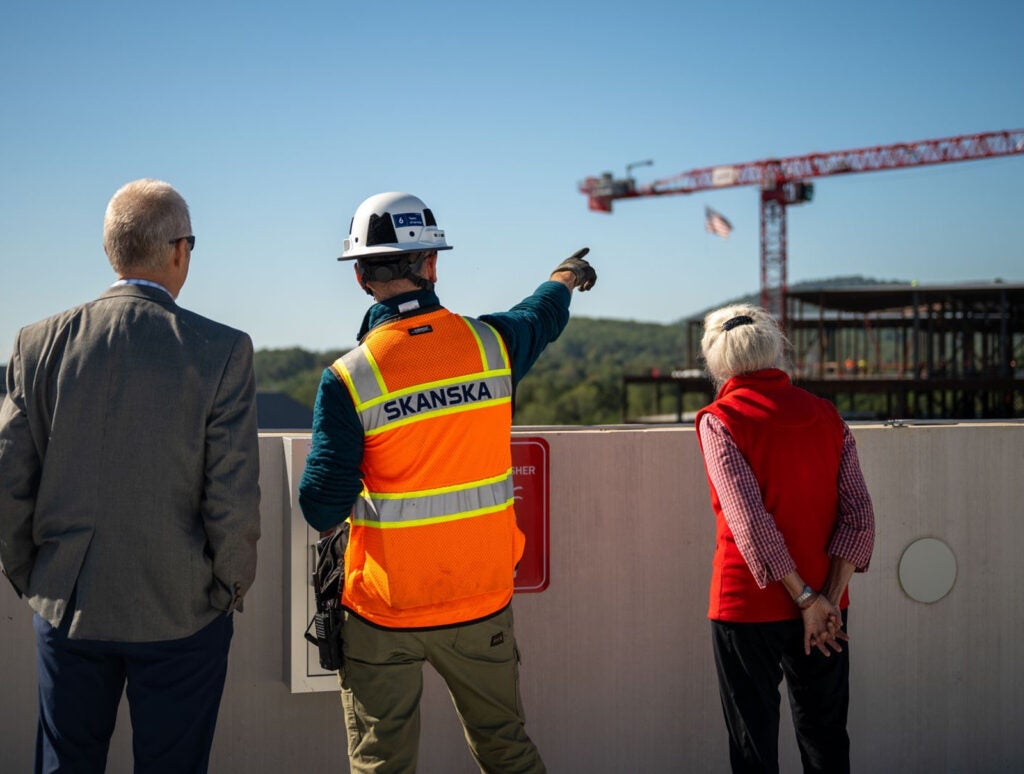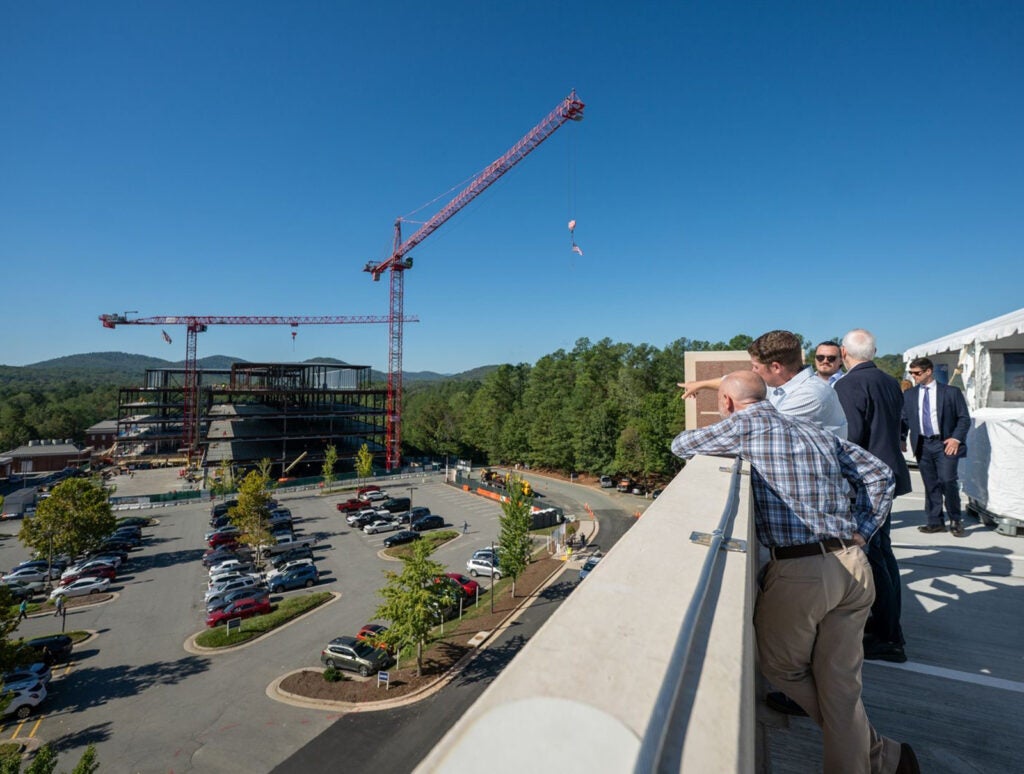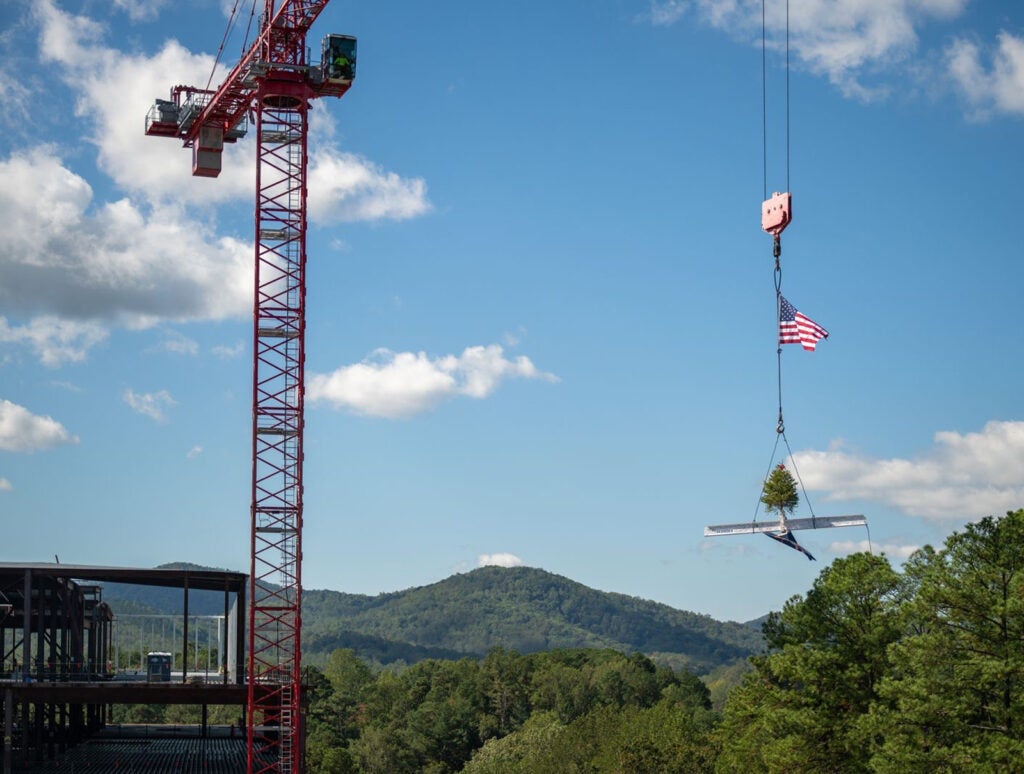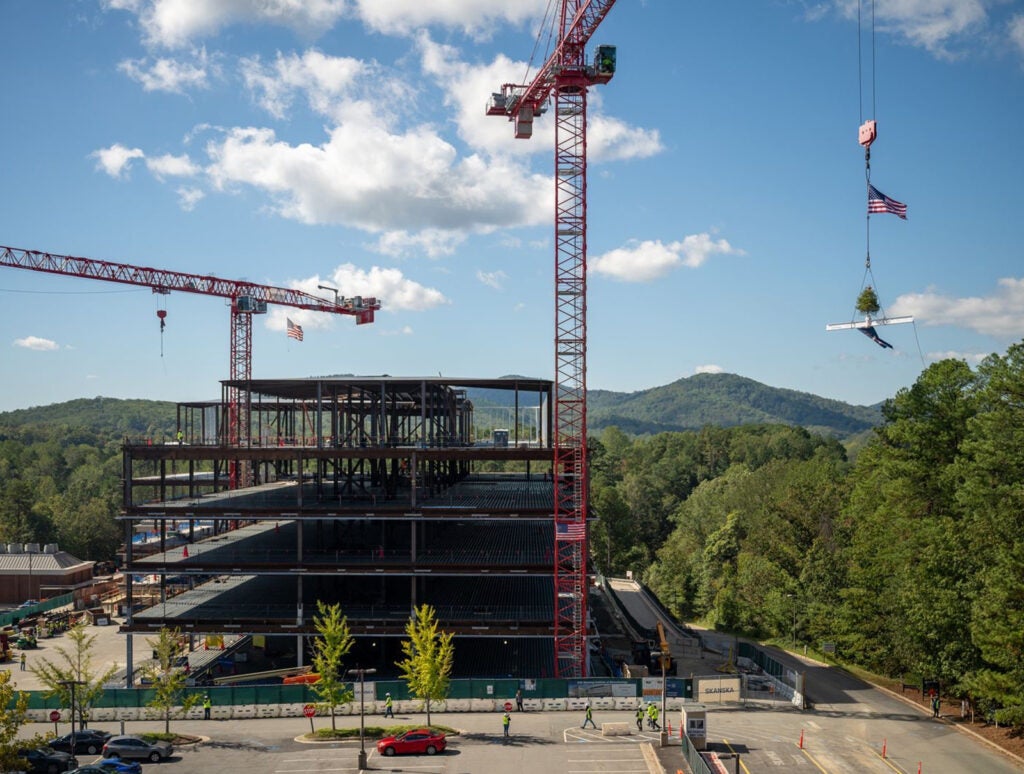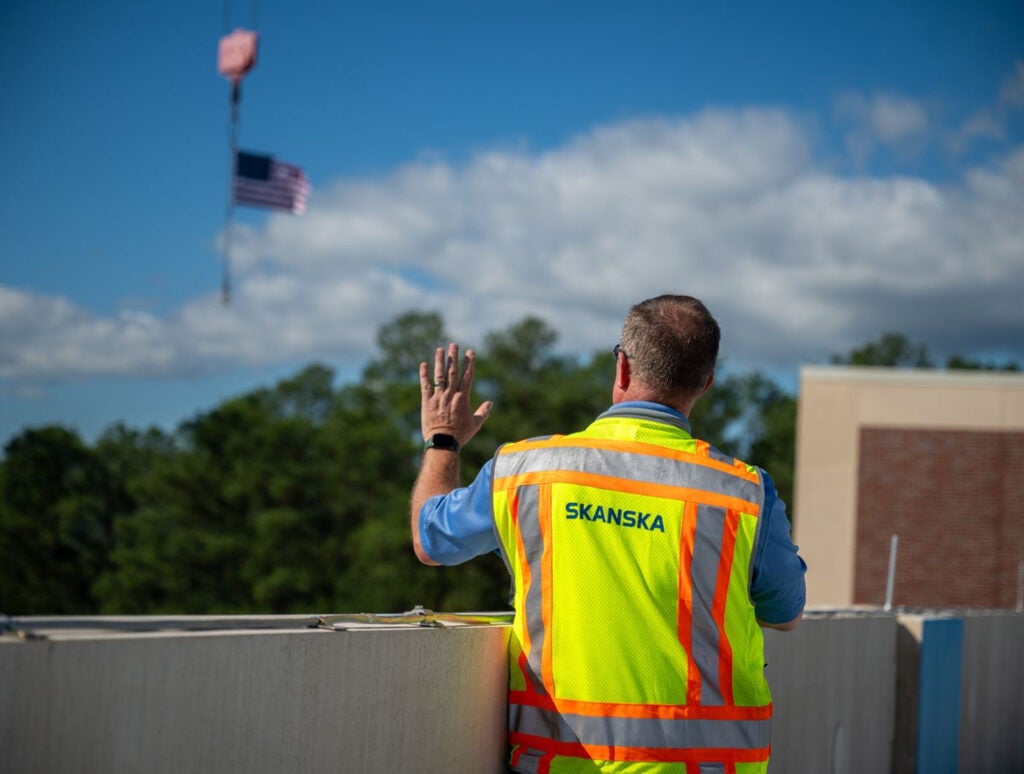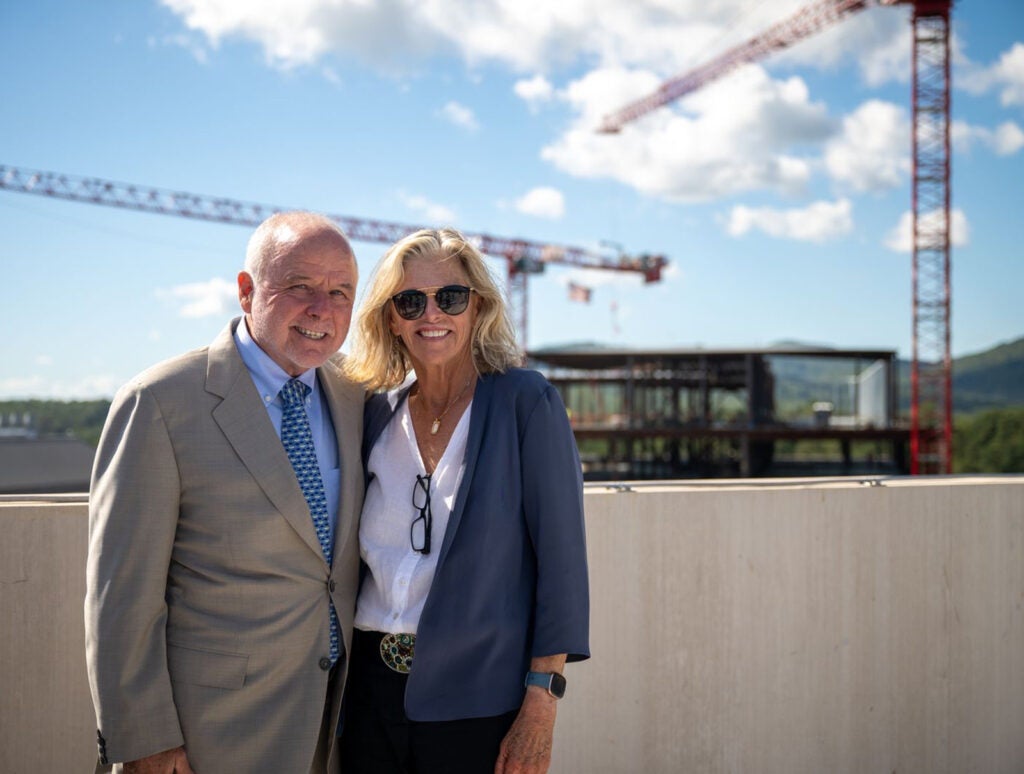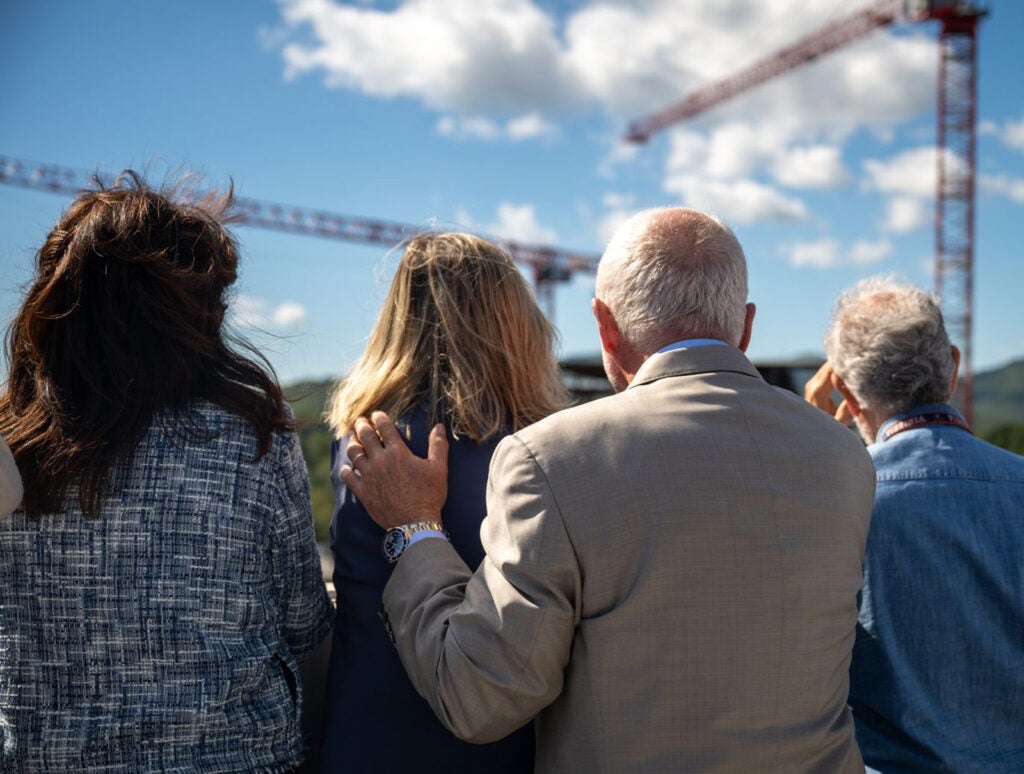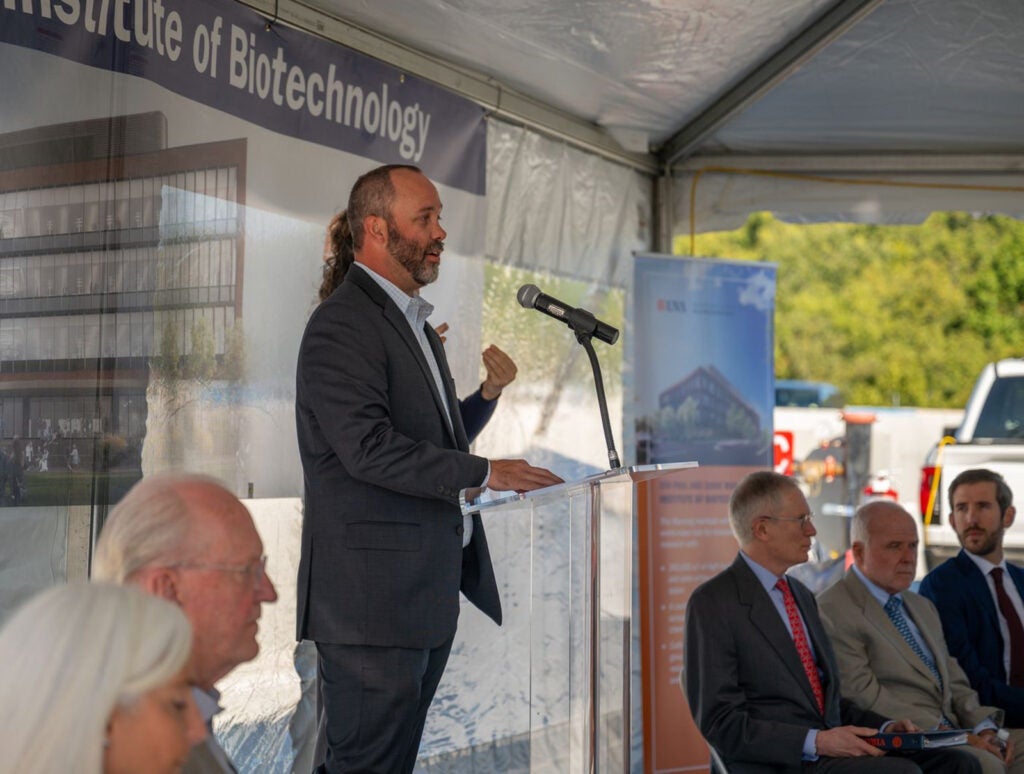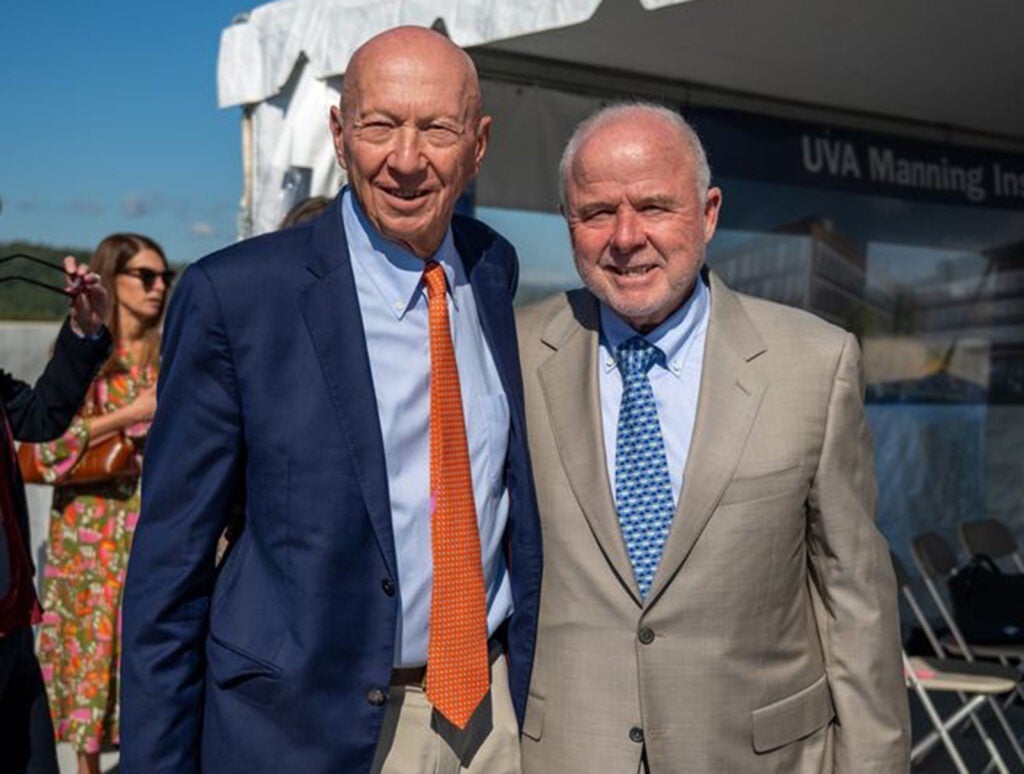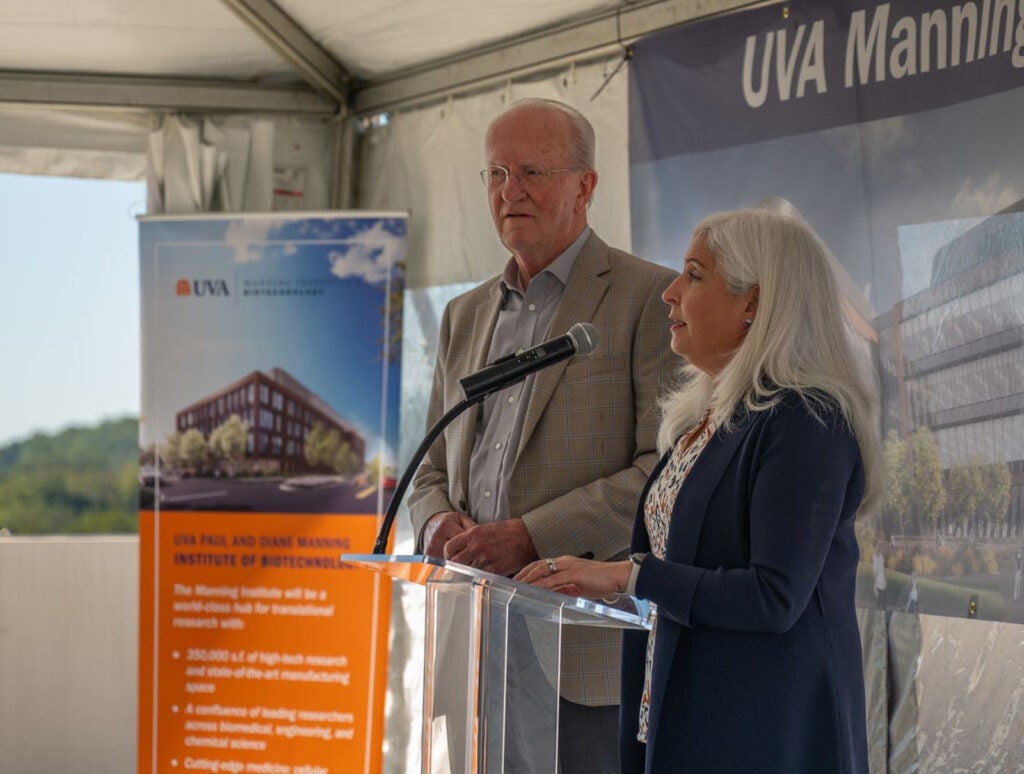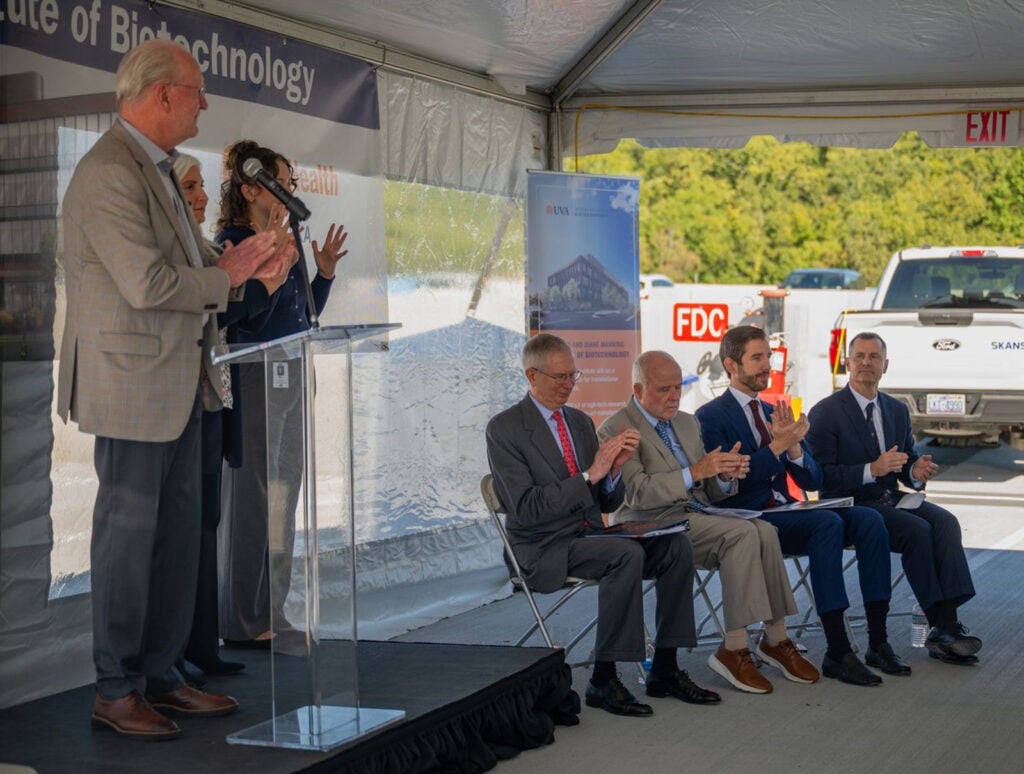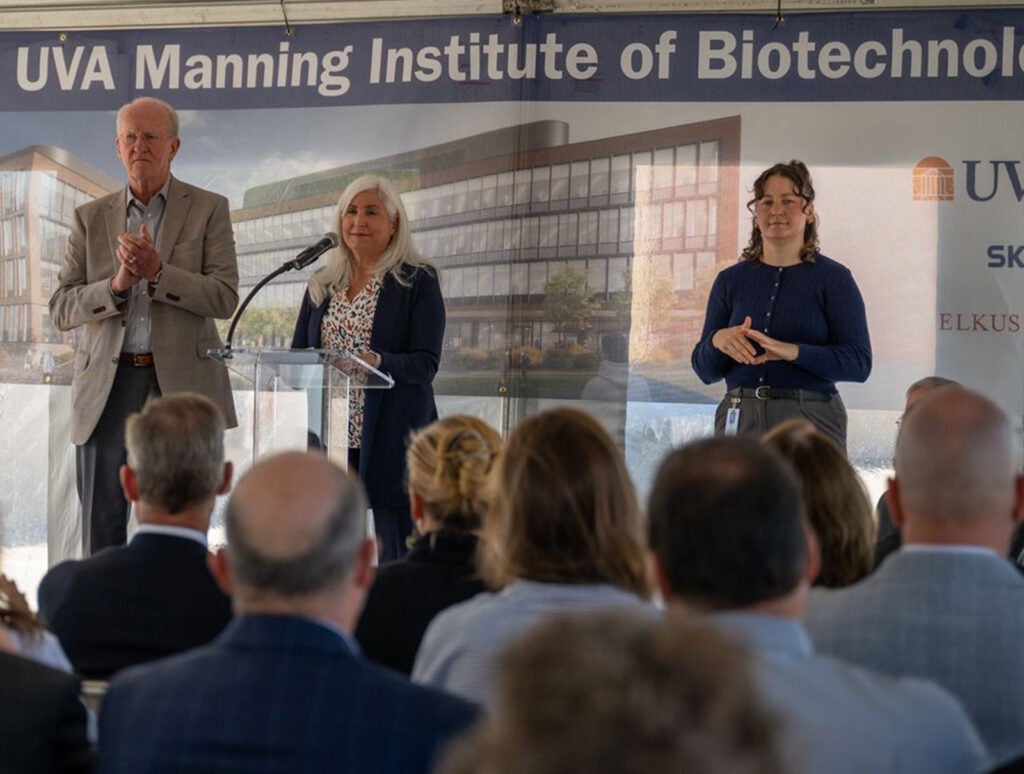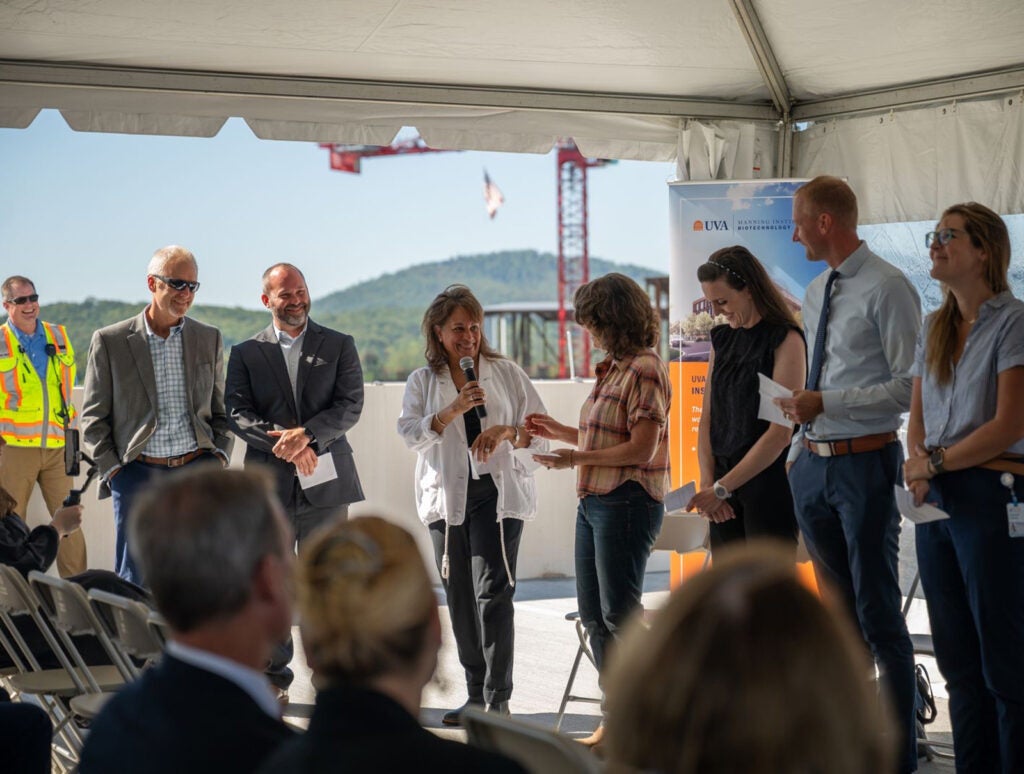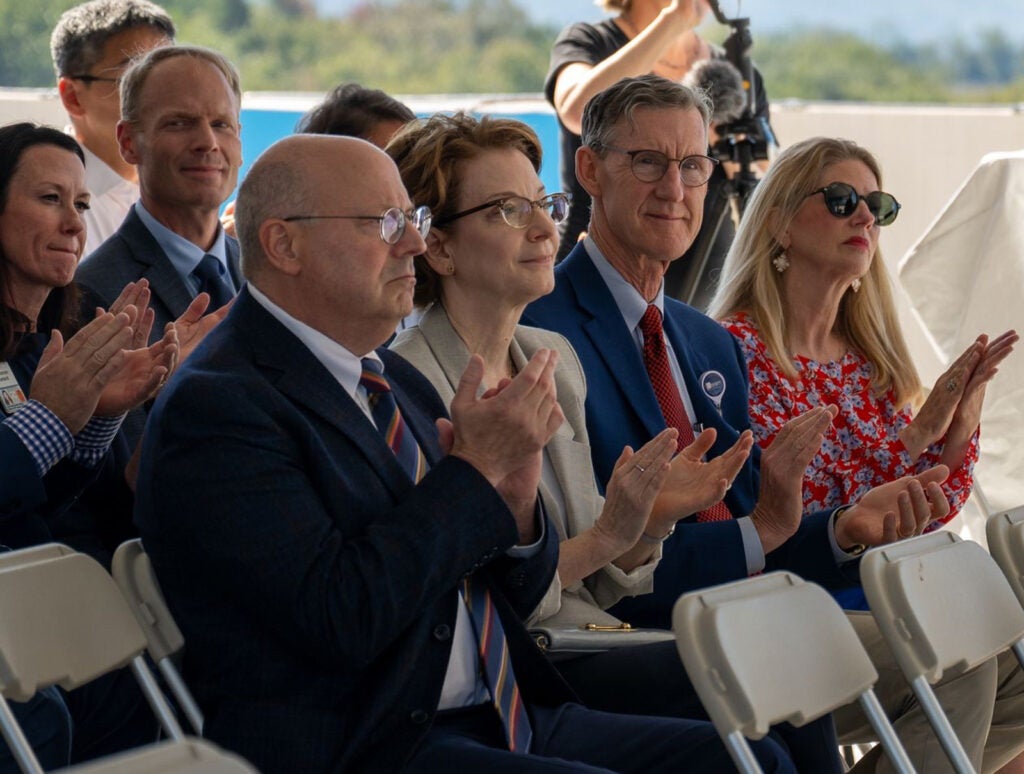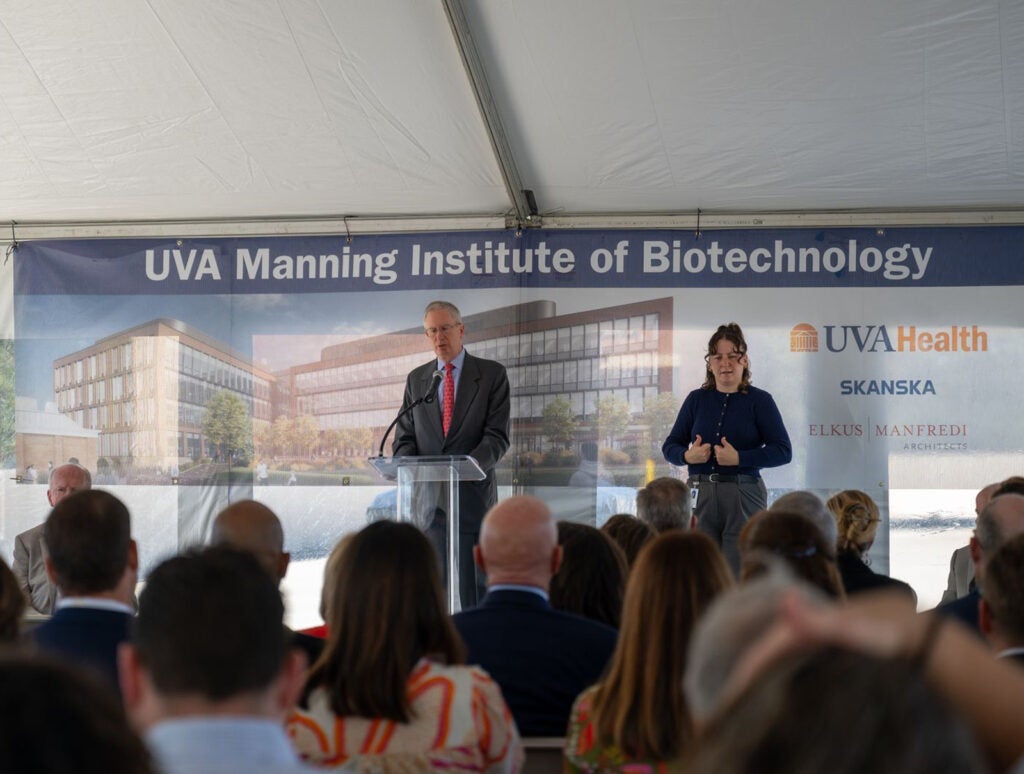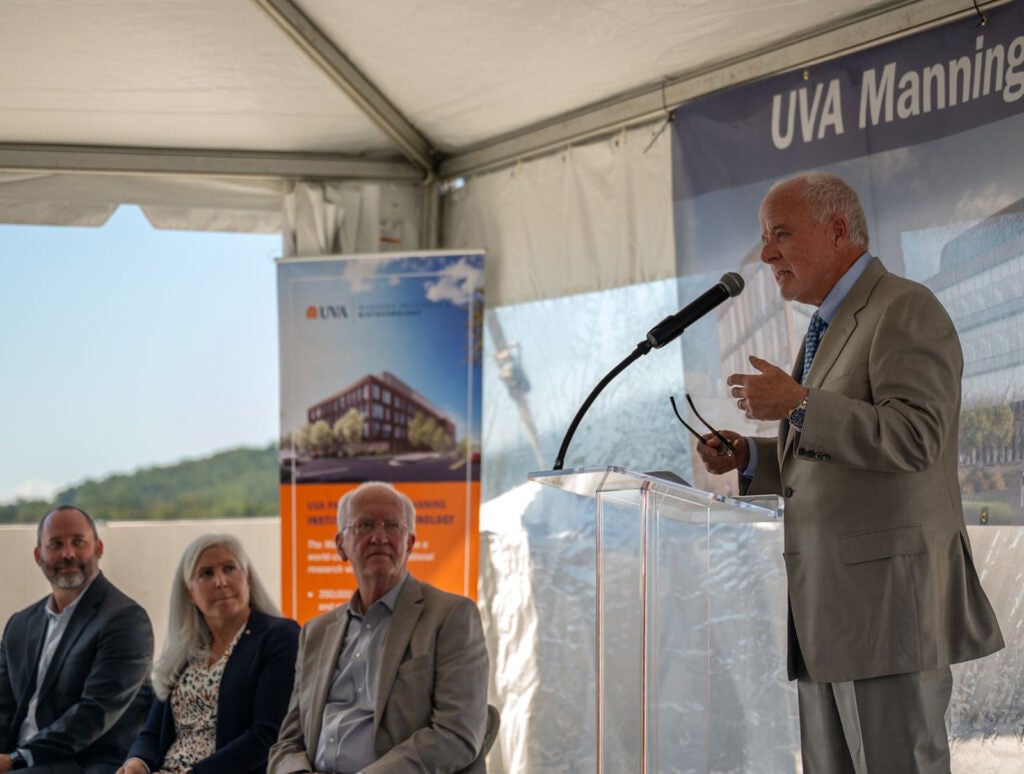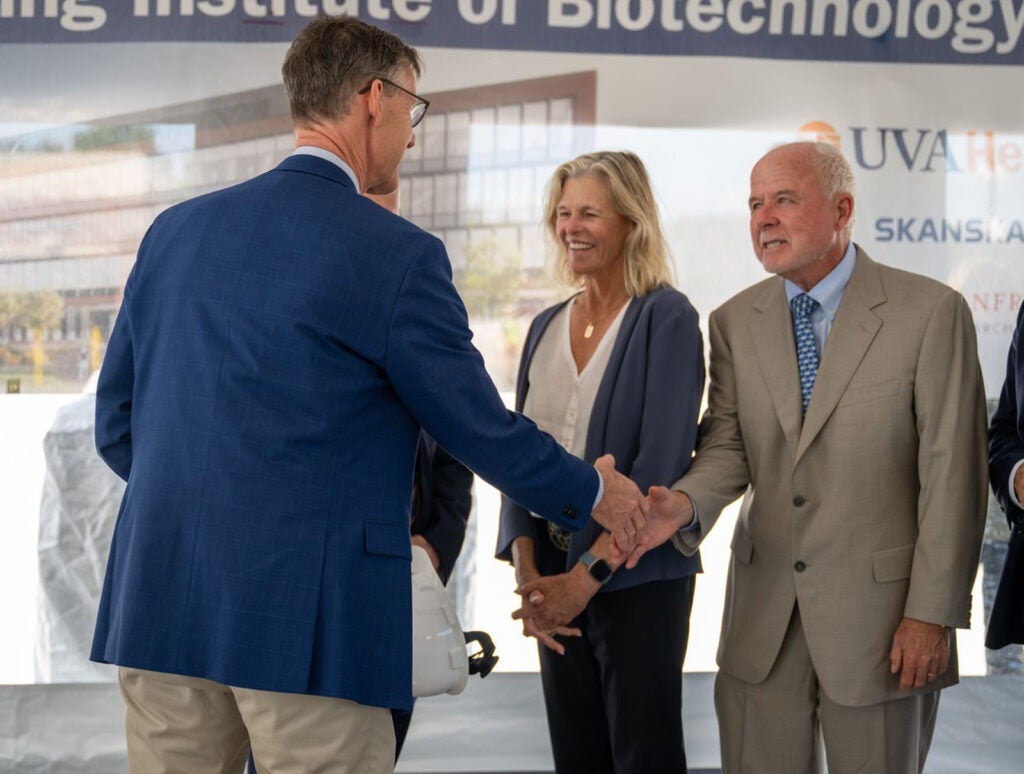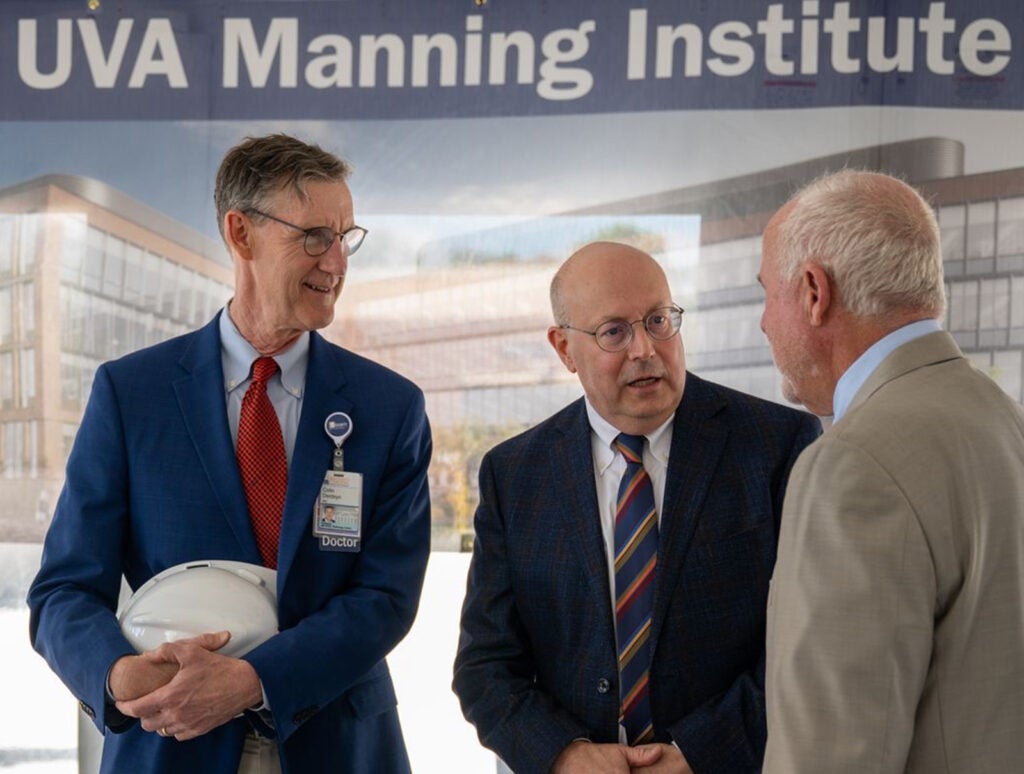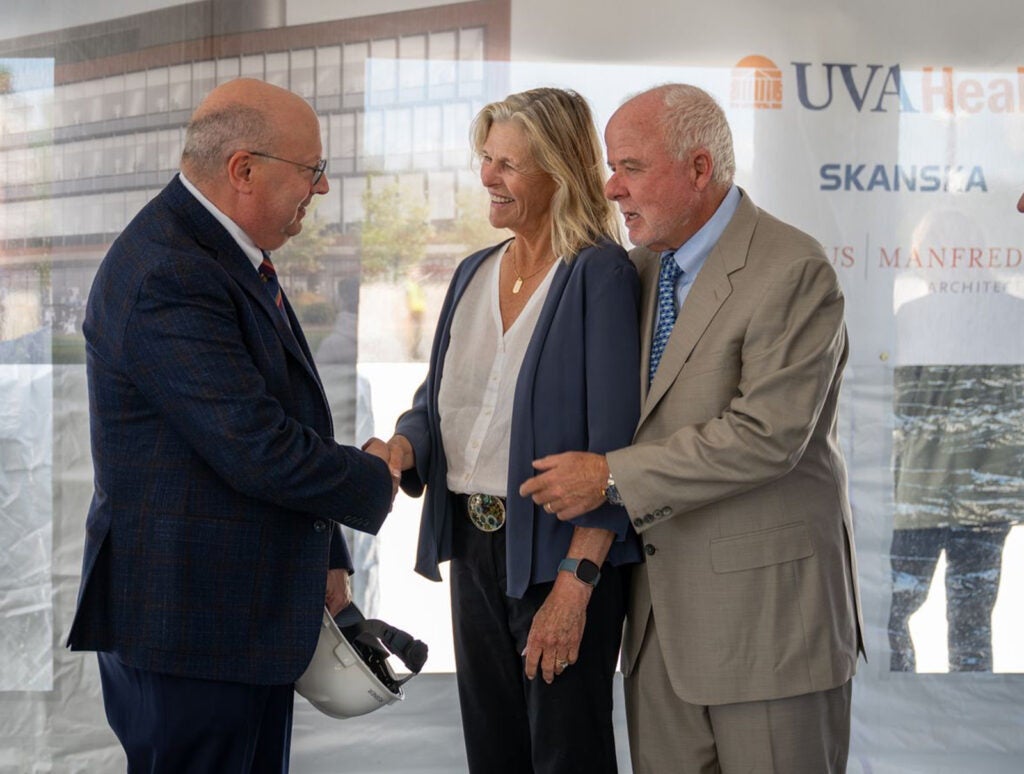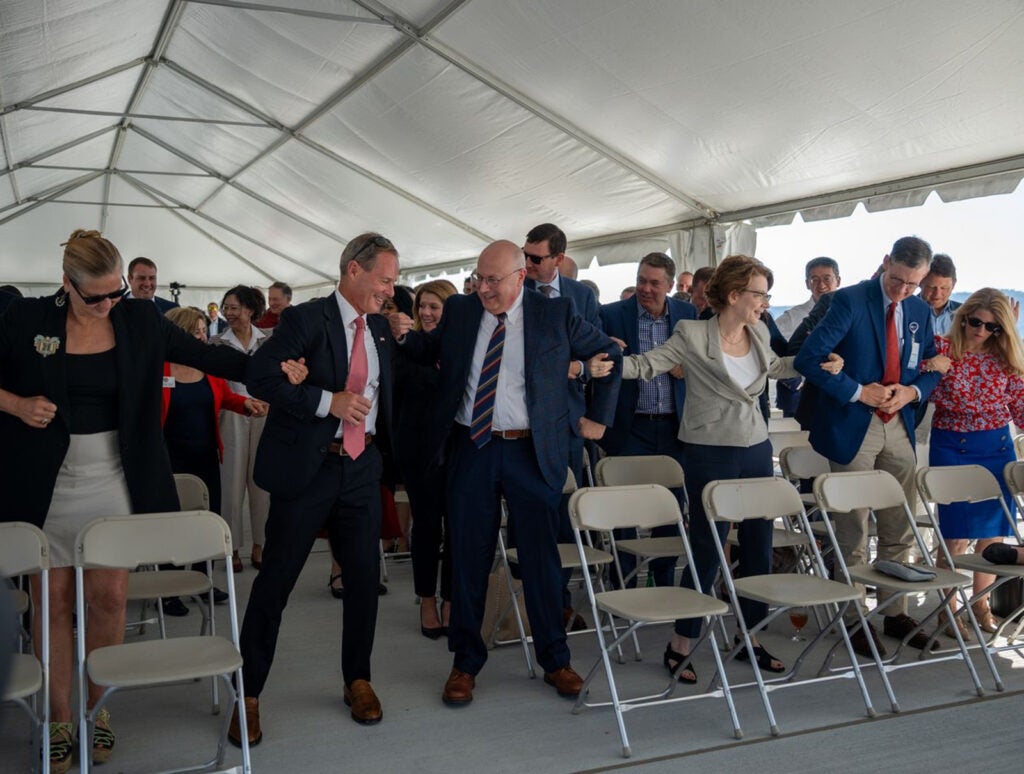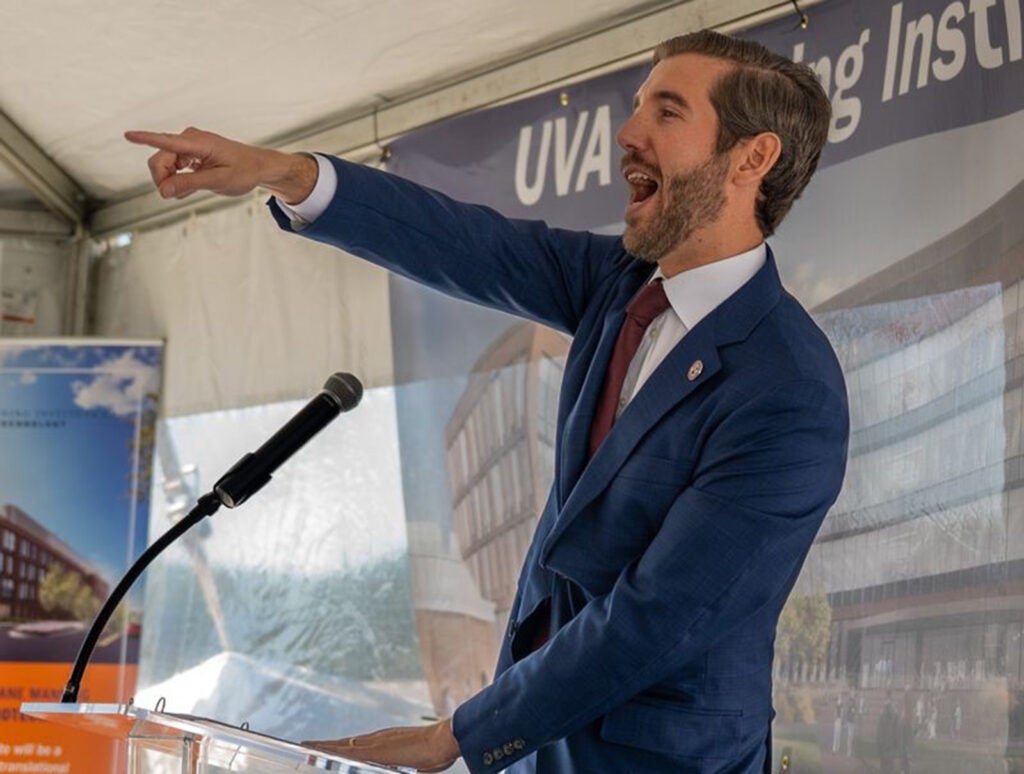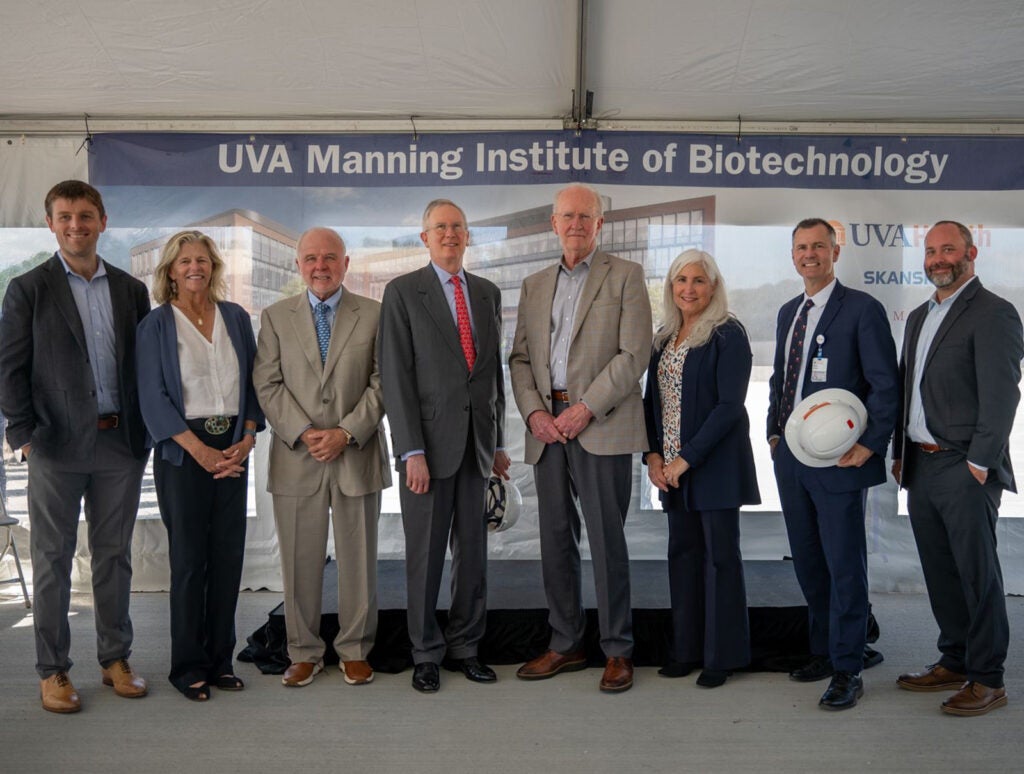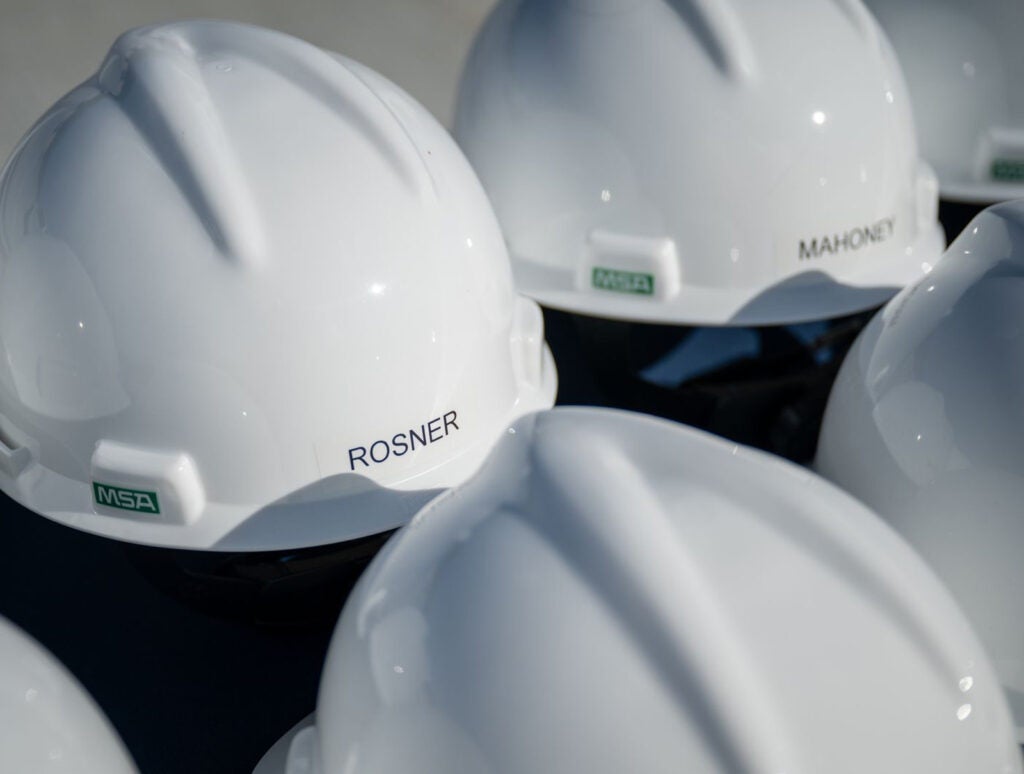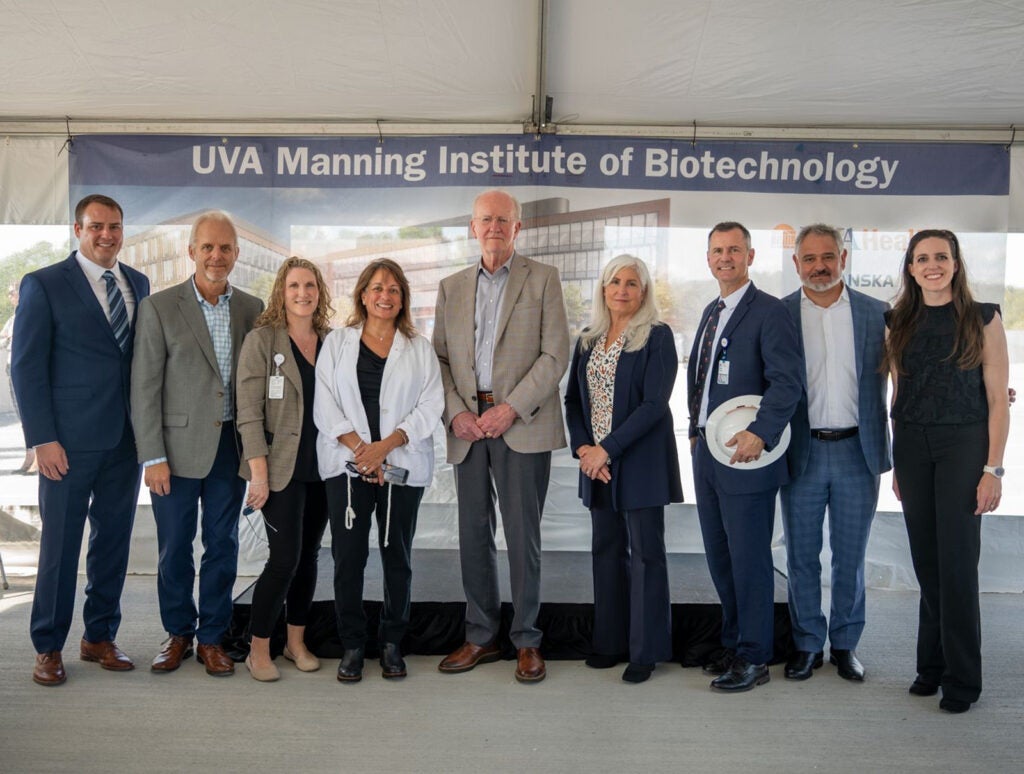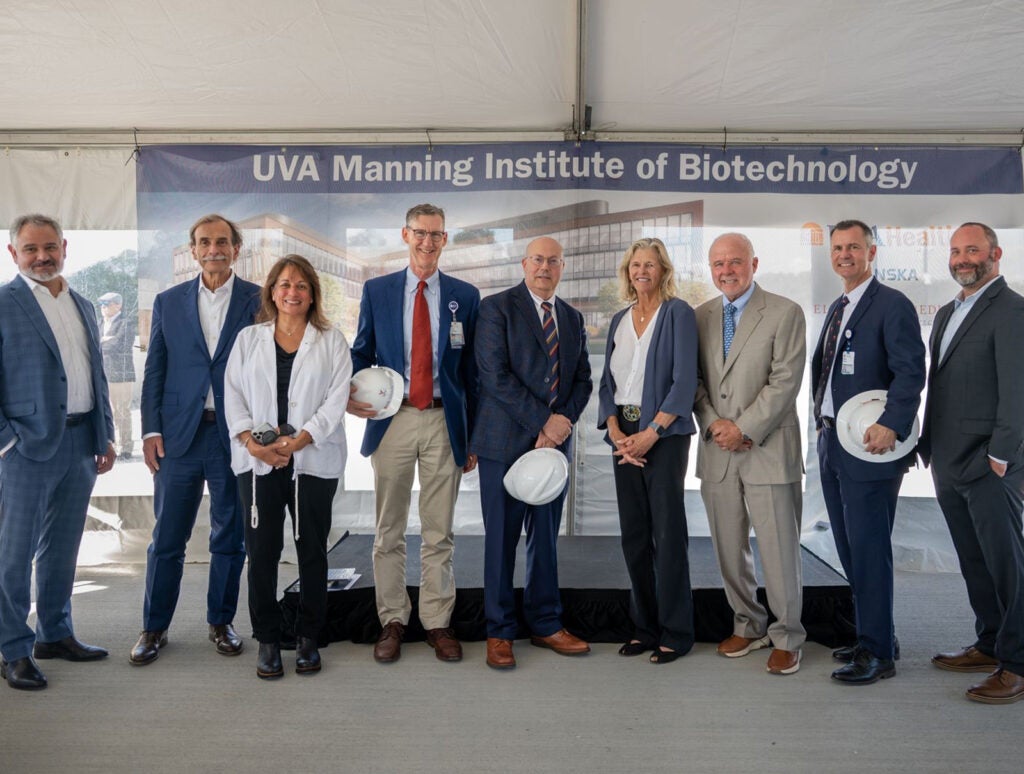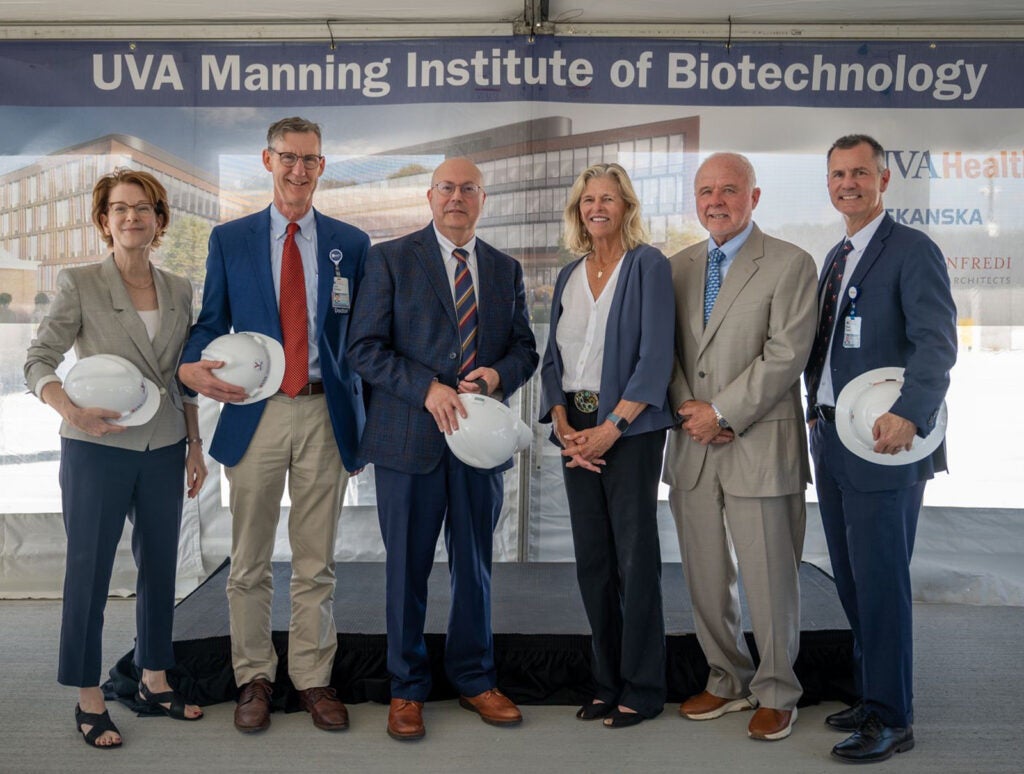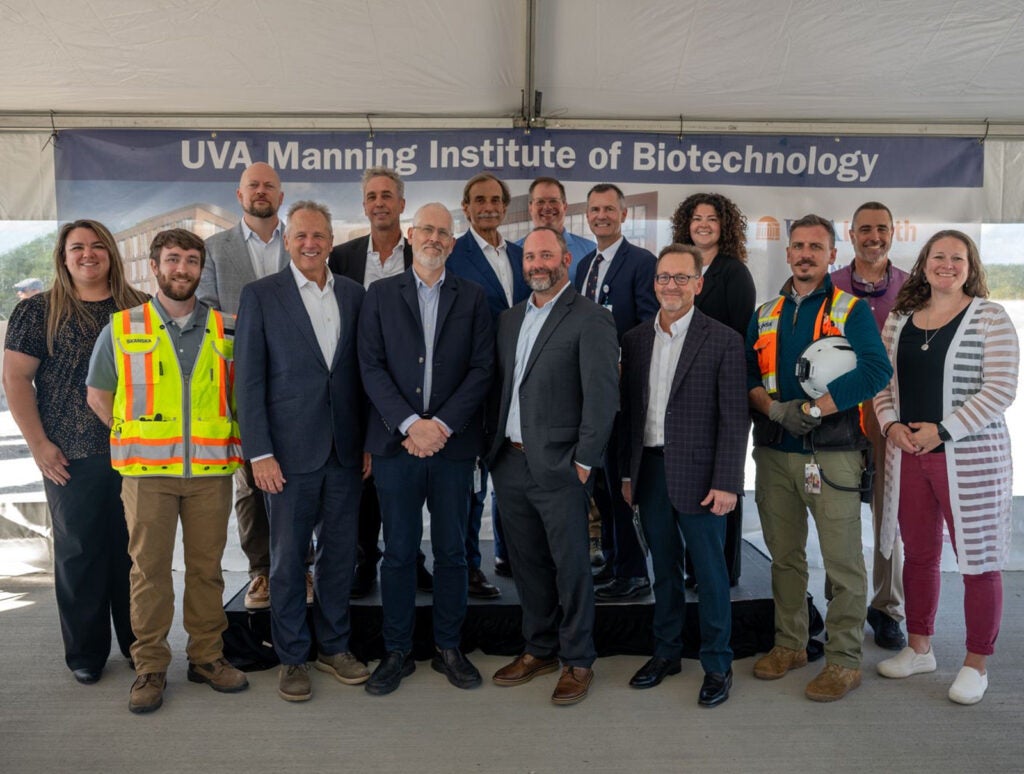
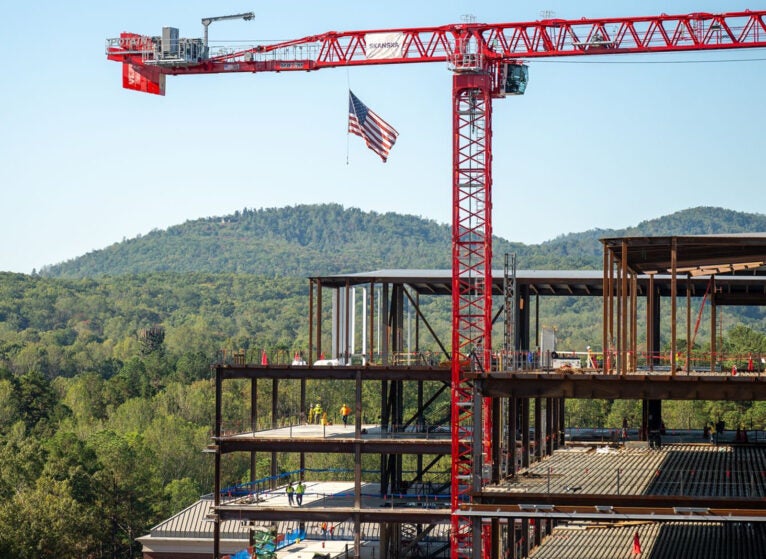
UVA’s Manning Institute Reaches Major Construction Milestone
The University of Virginia celebrated a key milestone in the construction of UVA Paul and Diane Manning Institute of Biotechnology’s 350,000-square-foot facility at Fontaine Research Park with a “topping off” ceremony during which the final steel beam was placed. (See the photo gallery below).
“I am delighted to be one step closer to opening the Manning Institute’s state-of-the-art new facility and grateful to everyone who has worked so hard on this project,” says Paul G. Mahoney, interim President, UVA. “The Manning Institute has already accelerated research and discovery within the University and the Commonwealth. I am eager to see what our talented faculty, staff, and research teams will accomplish in the Institute’s new home.”
Virginia Secretary of Commerce Juan Pablo Segura attended the ceremony in recognition of the institute’s vast potential to improve human health, create jobs, and power the state’s economy. The institute already is cultivating an “ecosystem of innovation” in Central Virginia that will bring hundreds if not thousands of jobs to the Commonwealth.
“Biotechnology and life sciences have been a priority for this administration in Virginia,” Segura says. “The project celebrated today is another example of working together across private and public partnerships to put Virginia on the map for biosciences. We already see these efforts starting to bear fruit, as momentum builds in the region with companies that are considering locating here or expanding their presence.”
Once complete — the cutting-edge biomedical research, development, and manufacturing facility will become the nerve center for biotechnology research, development. and manufacturing at UVA. It will bring together high-tech research facilities and state-of-the-art manufacturing capabilities under one roof.
Mark Esser, PhD, the institute’s Chief Scientific Officer and Head, notes the Manning Institute is already up and running virtually, producing discoveries that will become the foundation of new treatments and cures. “Our world-class faculty and staff are already hard at work, but this facility will vastly accelerate how quickly we can bring life-changing and lifesaving treatments to patients,” he says. “We want to make sure that our doctors, scientists and staff have the tools they need so that UVA is positioned at the very forefront of cutting-edge biomedical research.”
The institute primarily is focusing on existing strengths at UVA in cancer, neuroscience, and immunology research, and will employ new cutting-edge medicine technologies in cellular therapy, gene therapy, nanotechnology, and drug delivery that have the potential to rewrite how diseases are treated in the 21st century.
The institute already is paying dividends: UVA Health has entered into a research partnership with drug company AstraZeneca to advance a potential way to stop deadly C. difficile, the most common hospital-acquired infection. This research is being performed by UVA Health’s William A. Petri Jr., MD, PhD, and colleagues.
Such new treatments will be tested in a statewide Clinical Trials Network that is being launched in conjunction with the Manning Institute. UVA Health just began offering clinical trials for the first time at its medical centers and clinics in the Culpeper and greater Prince William areas, providing trial participants access to potential treatments before they are officially available — sometimes years before.
Paul Manning, a longtime healthcare entrepreneur who now chairs UVA’s Health System Board, noted the new Fontaine facility will help UVA fulfill the untapped potential of its research enterprise. “It was obvious UVA had the expertise and talent to transform the future of medicine and improve human health,” says Manning, who donated $100 million with his wife Diane Manning to launch the institute. “Now our researchers will have the world-class resources they need to do so.”
Matt Kidwell, Project Executive for Skanska construction firm, called what crews have accomplished at Fontaine so far an “incredible feat.” He noted that more than 740 workers — mostly from Central Virginia — have spent more than 165,000 worker hours erecting almost 4,000 tons of steel.
“I thank and salute the many men and women involved for their extraordinary efforts,” he says. “It’s exciting to see the facility reach this critical construction milestone, and it’s rewarding for us to be involved in a project that will have far-reaching benefits for the health and wellbeing of people around the world.”
The new Manning facility is expected to open in 2027.
See the Oct. 8 photo gallery:
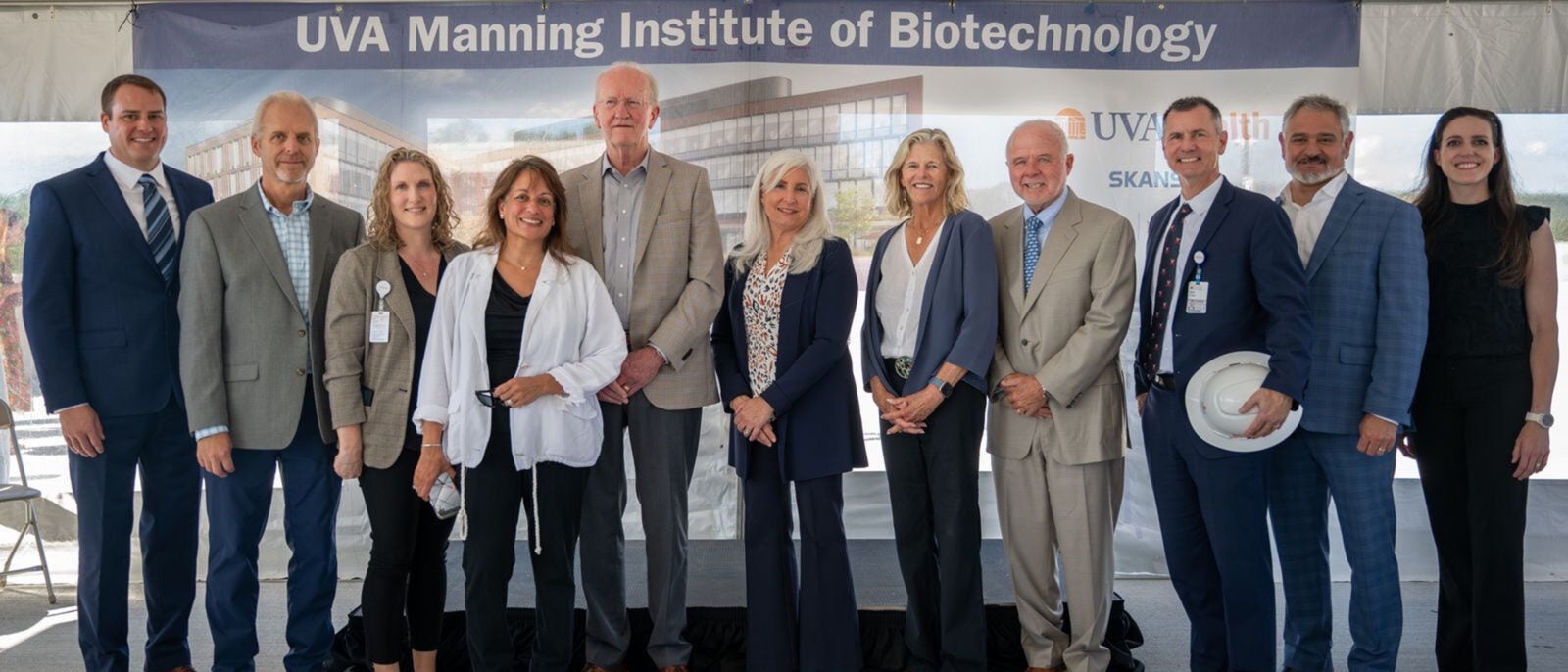
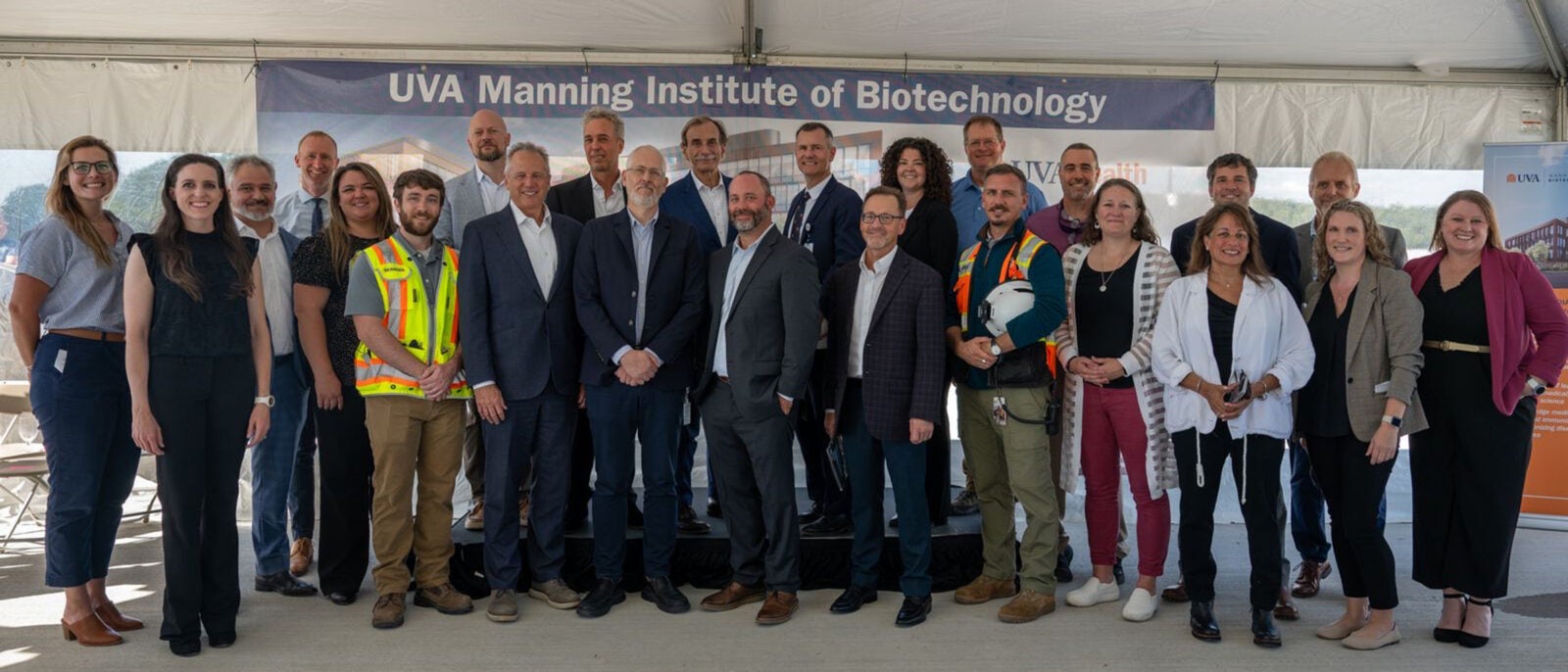
To keep up with the latest medical research news from UVA, subscribe to the Making of Medicine blog.
Latest News

